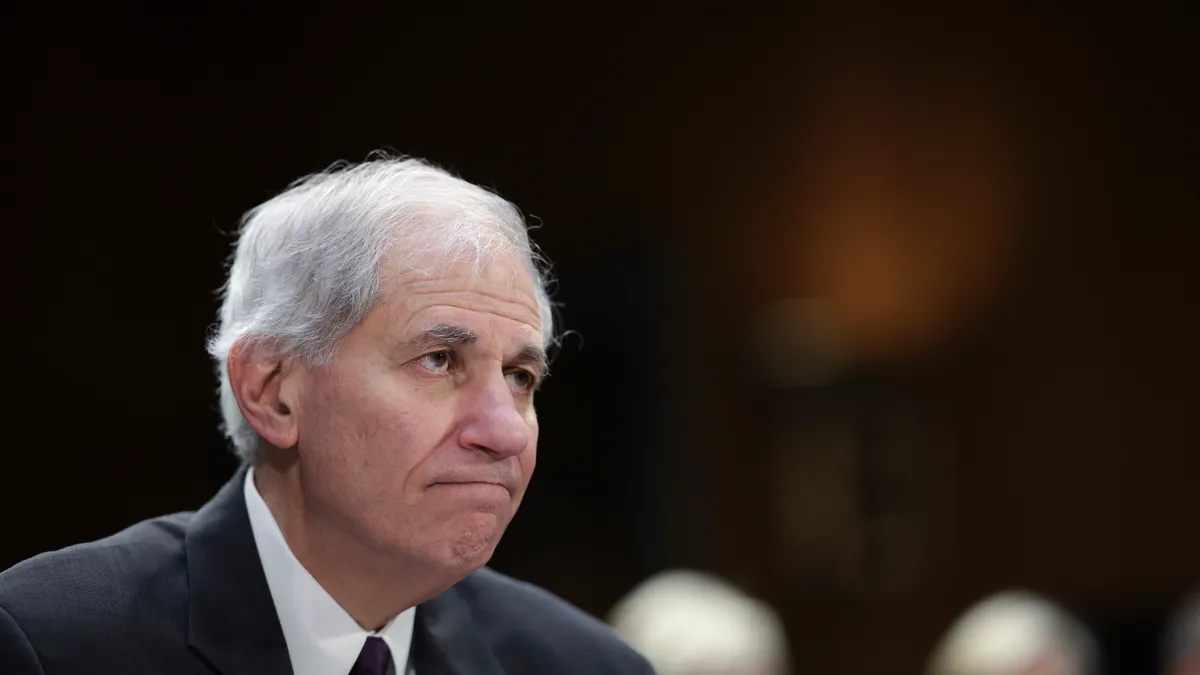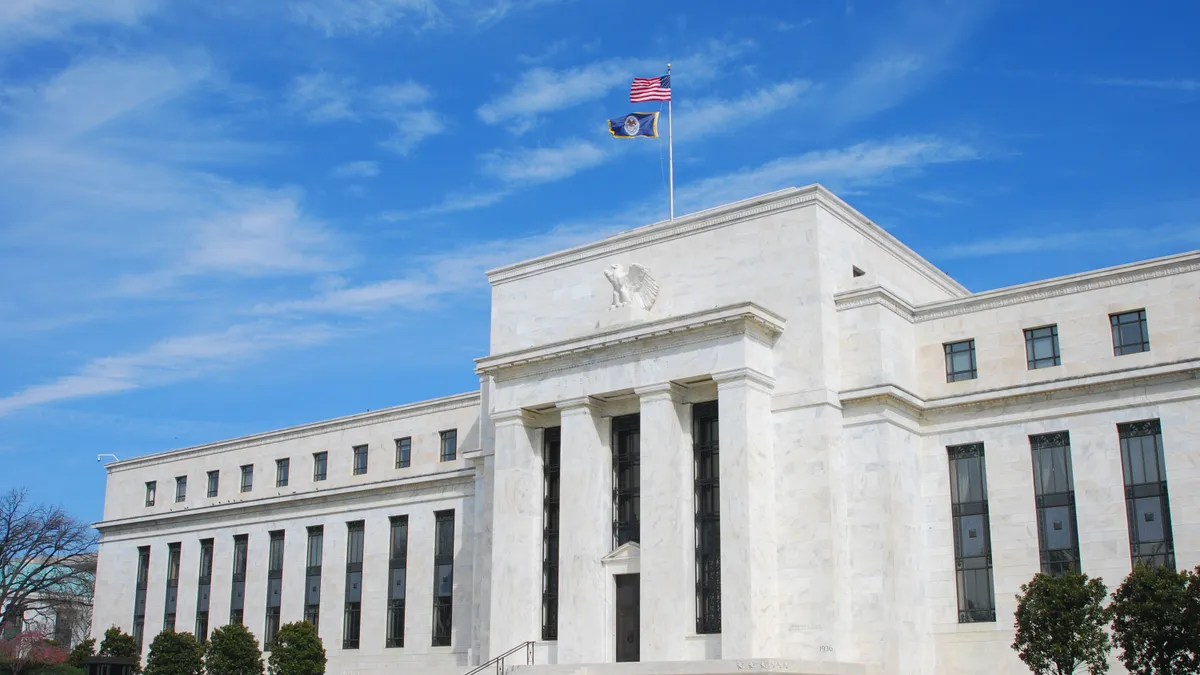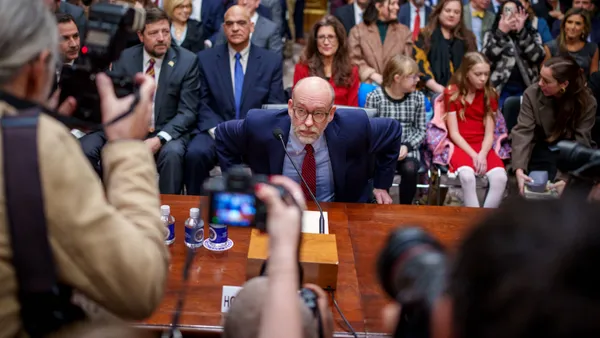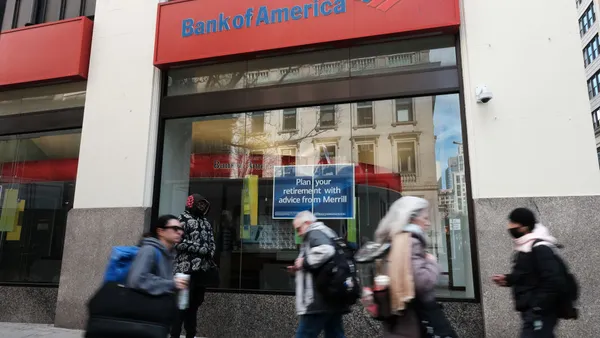Dive Brief:
- A 2028 deadline to bring the Federal Deposit Insurance Corp.’s Deposit Insurance Fund back to its statutory minimum reserve ratio of 1.35% won’t be affected by last month’s collapse of two regional lenders, FDIC Chair Martin Gruenberg said Tuesday.
- “The bottom line to today’s update is that even with increased uncertainty in the banking industry and the recent failure of two large banks, staff project that the losses from the two failures are not expected to have a material effect on the projected timeline for reaching the statutory minimum reserve ratio of 1.35 percent,” Gruenberg said during a board meeting.
- The remarks come as the agency has yet to announce how it plans to levy a special assessment on FDIC-insured banks following the $22.5 billion cost it accrued when it decided to backstop all of failed Silicon Valley Bank and Signature Bank’s deposits last month.
Dive Insight:
The collapse of the regional lenders marked the two largest bank failures since the 2008 financial crisis. Regulators’ decision to backstop all of the failed banks’ deposits, including uninsured funds, has brought increased attention to the FDIC’s DIF.
The FDIC estimates the failures of SVB and Signature will cost the DIF $22.5 billion.
The regulator said roughly $19.2 billion of that is attributable to the cost of covering uninsured deposits — funds it plans to recover through a special assessment, and which won’t affect the DIF balance.
The remaining $3.2 billion, which came from covering the failed banks’ insured deposits, will directly affect the DIF balance, the FDIC said.
The regulator said it will issue a notice-and-comment rulemaking in May regarding the special assessment.
The FDIC’s board meeting comes as community banks have urged the regulator to spare small banks from the upcoming special assessment.
In a letter to Gruenberg on Thursday, ICBA CEO Rebeca Romero Rainey said such a fee should instead be levied on the nation’s largest banks, which stand to benefit from the decision to backstop uninsured deposits beyond the FDIC’s standard $250,000 cap.
In comments shared during Tuesday’s board meeting, Consumer Financial Protection Bureau Director Rohit Chopra — one of the FDIC’s five board members — questioned whether the regulator is adequately pricing varying levels of risk in its bank assessments.
“The data suggests that for the vast majority of institutions, particularly small ones, they're easy to resolve and therefore do not pose much cost to the fund. And where we have had losses to the fund over the years has been from larger institutions,” he said. “I think if we do look at that new framework ... some of the larger institutions who can pose more risk to the funds will pay more and certain smaller ones will pay less.”
Meanwhile, the FDIC has been working to restore its reserve ratio since 2020, when the government’s response to the COVID-19 pandemic resulted in a steep rise in insured deposits.
By law, the agency’s DIF is required to hold a minimum of 1.35% of all insured deposits.
The DIF’s reserve ratio, however, dipped during the pandemic as stimulus programs spurred a swell of insured deposits held at banks. At the end of 2022, the ratio stood at 1.27%, according to the FDIC.
In September 2020, the FDIC board adopted a resolution plan to replenish the fund by 2028.
By June 2022, however, FDIC staff raised concerns that under certain projected scenarios, the reserve ratio was at risk of not reaching the statutory minimum within the eight-year time frame.
In response, the board voted in October to amend the plan, and adopted a rate hike of two basis points to improve the likelihood that the reserve ratio would be restored by 2028. The revised assessment rate, which is paid by FDIC-insured banks, became effective in January.
“Reaching the statutory minimum reasonably promptly and in advance of the statutory deadline strengthens the DIF so that it can better withstand unexpected losses and reduce the likelihood of pro-cyclical assessments,” Gruenberg said Tuesday.
Under favorable conditions, it’s possible the DIF could reach the minimum reserve ratio as early as next year, FDIC staff said Tuesday.














